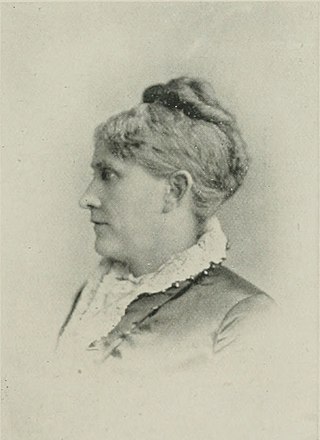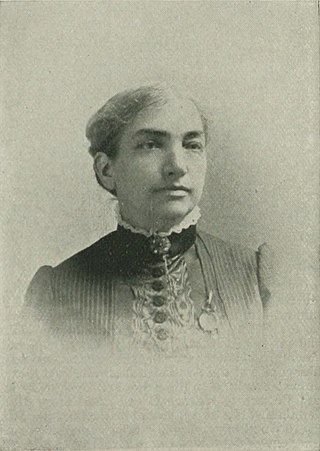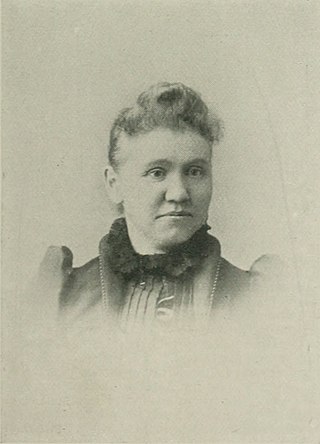Ellen O'Keefe was an Irish immigrant to New York City, who took up nursing. Her experience led her to open a women's shelter, and later to found a religious congregation to continue her work. St. Zita's Home for Friendless Women was established at 158 East 24th Street, New York City, in 1890. It soon moved to West 14th Street, where it remained until it ceased operations around 2002.
A protectory was a Catholic institution for the shelter and training of the young, designed to afford neglected or abandoned children shelter, food, raiment and the rudiments of an education in religion, morals, science and manual training or industrial pursuits. Institutions of this nature were once found in most of the dioceses of the United States. They were usually opened to receive orphans, truants, juvenile delinquents, and destitute children. The largest, by far, was the Catholic Protectory in New York.
The Little Sisters of the Assumption is a Roman Catholic religious institute founded in France in 1865 by Antoinette Fage (1824–1883) and Etienne Pernet. The declared work of the congregation is the nursing of the sick poor in their own homes. This labour they perform gratuitously and without distinction of creed.

Newark Female Charitable Society was founded by the leading women of Newark in 1803, making it the oldest social organization in New Jersey and the third oldest in the United States. Its complex of buildings was added to the National Register of Historic Places in 1979.

Mary Davy Tenney Gray was a 19th-century American editorial writer, clubwoman, philanthropist, and suffragist from Pennsylvania, who later became a resident of Kansas. She lived in Kansas City, Kansas for more than twenty years and during that time, was identified with almost every woman's movement. She served on the editorial staff of several publications including the New York Teacher, the Leavenworth Home Record, and the Kansas Farmer. Gray's paper on "Women and Kansas City's Development" was awarded the first prize in the competition held by the Women's Auxiliary to the Manufacturers' Association of Kansas City, Missouri.

Emma Gilson Wallace was an American philanthropist and leader of a charitable organization.She served as the 12th National President of the Woman's Relief Corps (WRC).

Sophia Braeunlich was an American business manager and journalist. She started her career as an amanuensis at The Engineering and Mining Journal, advancing to positions of exchange news editor and reader. She was elected secretary and treasurer of the Scientific Publishing Company, and served as the establishment's business manager. The Engineering and Mining Journal and the Mineral Industry felt the influence of Braeunlich in devising and adopting the best methods for increasing circulation, obtaining advertisers, improving the quality of the published matter, and systematizing the efficiency of office work. Braeunlich worked out of an office which had been previously used by Henry Ward Beecher. She was the first American woman elected a fellow of the Imperial Institute of Great Britain, and was a delegate to the international geological congress at St. Petersburg, Russia in 1897. She died in 1898.

Mary Gage Day was an American physician and medical writer. Day published several papers on Locoweed, including two articles in the New York Medical Journal, from which the definition of "Loco Disease" was created in Frank Pierce Foster's New Medical Dictionary. She died in 1935.

Amelia Minerva Starkweather was an American educator and author who was a lifelong worker in philanthropic and charitable enterprises, and highly successful in evangelistic meetings.

Lilian Carpenter Streeter was an American social reformer, organizational founder, clubwoman, and author. She founded the Concord Woman's Club, and the New Hampshire Federation of Woman's Clubs. Having lived in Concord, New Hampshire from 1877 till her death, she was active in every social, educational, and philanthropic movement that was brought to her notice, and her actions commanded the support and cooperation of other women. At the National Conference of Charities and Corrections, held in Baltimore, Maryland, 1915, Streeter gave a paper entitled, "The Relation of Mental Defect to the Neglected, Dependent, and Delinquent Children of New Hampshire", making her the first woman to give a paper of this kind at a national conference. Streeter's articles on social and charitable topics appeared in magazines of the day.

Fanny E. Minot was an American public worker, social reformer, charitable organization leader, and clubwoman who was at the front in many lines of public service, including charitable, educational, church and social work. She held a strong interest in all those movements of the 20th-century which brought women into prominence. Minot served as president of the Woman's Relief Corps (WRC) of Concord, New Hampshire, of the State of New Hampshire, and lastly, as the 22nd National President of the WRC. She was also a member and regent of the Daughters of the American Revolution (DAR).

Lucy Salisbury Doolittle was an American philanthropist and clubwoman. She was the first woman trustee of the Unitarian Church, was one of the founders of the Twentieth Century Club and president at one time of the board of children's guardians. In all her work for the poor and needy of Washington, D.C., she showed great executive ability and marked business talent.

Sarah Katherine Taylor was an American evangelist and temperance activist. She was the editor of, The Little Christian, All Nations Monthly, and Bible Faith Mission Standard.

Lucy Wood Butler was a 19th-century American pioneer temperance leader. She was the first president of the Woman's Christian Temperance Union (W.C.T.U.) of New York. Butler's financial means enabled her to give her time to charitable works.
Eliza M. Chandler White was an American social reformer and charity work leader, as well as an abolitionist, and clubwoman. She founded the Brooklyn Home for Consumptives, and the Fort Greene Chapter of the Daughters of the American Revolution (D.A.R.). She was also the head of the Prison Ship Martyrs Committee which erected the Prison Ship Martyrs' Monument in Fort Greene Park, Brooklyn. She was one of the best-known women of Brooklyn in her day.

Home for Destitute Catholic Children, Boston was a temporary home in Boston, Massachusetts for destitute and neglected children, aged 4 to 12, of any race, creed, or nationality. The Home was incorporated in 1891, succeeding the Association for the Protection of Destitute Roman Catholic Children in Boston, incorporated in 1864.

Libbie Beach Brown was an American philanthropist. She was well known and influential in temperance affairs and other reform movements, and always affiliated with progressive elements.

The Nebraska home for dependent children was an American charitable organization situated at the corner of Eleventh and South streets, in Lincoln, Nebraska. This Home was duly incorporated in 1876. So many came for protection that in 1881, the legislature made an appropriation of US$5,000 for the erection of a permanent building. For some years there after the board of managers and the state shared responsibility and authority for this Home, the state making appropriations from time to time for improvements and maintenance. Later, the state obtained control by refusing to make appropriation unless given complete authority. A further restriction upon appropriations for this institution made the Home available only for children who were subject to adoption. In 1897, it was placed under the immediate control of the state and in 1914, it was placed under the board of control of state institutions.
The Advocate and Family Guardian was an American periodical published semi-monthly by the New York Female Moral Reform Society and its successor, the American Female Guardian Society, characterized as a "pioneer child-saving institution in the U.S.". The first number appeared in 1835 and the last, in volume 109, number 6, in June 1941. Initial publication took place at 29 East 29th Street, in New York City. The Advocate, a continuation of McDowell's Journal, went through several name changes: Advocate of Moral Reform (1835–47), The Advocate of Moral Reform and Family Guardian, (1847–49), finally, The Advocate and Family Guardian from 1849 until it ceased publication in 1941.

Mary E. Green (1841–1910) was an American physician, the first woman admitted to membership in the New York Medical Association. Green served as President of the American Household Economic Association.


















